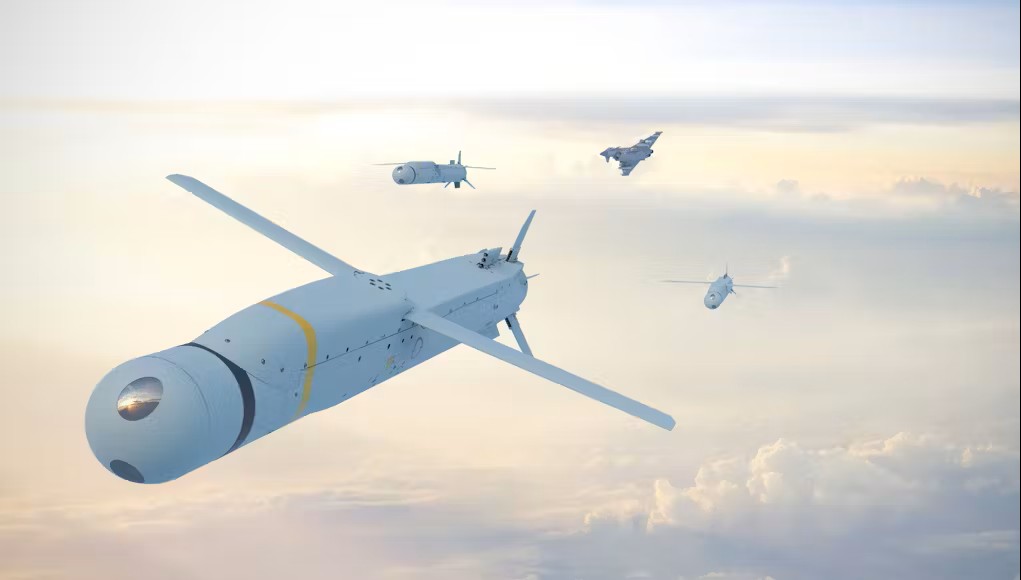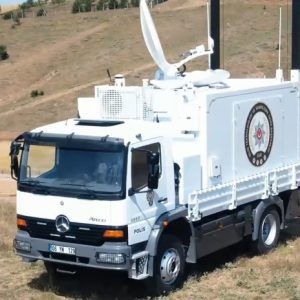
MBDA Unveils SPEAR GLIDE at DSEI 2025
MBDA has introduced MBDA SPEAR GLIDE, a lower‑cost precision glide weapon designed to boost combat mass and speed up fielding. Announced at DSEI 2025, the variant complements SPEAR and SPEAR‑EW with an attritable option built for high‑rate production. It targets contested airspace and tight budgets, where affordability, adaptability, and inventory depth drive outcomes.
Key Facts — MBDA SPEAR GLIDE
Glide‑only member of the SPEAR family for high‑volume manufacture and fast entry to service.
Uses COTS parts and alternative lines to cut cost and scale output.
AI and image‑based navigation enable guidance in GNSS‑denied conditions.
Reuses SPEAR loaders, test gear, and integration paths; development accelerated by digital twins.
Roles: precision strike and SEAD/DEAD against static, mobile, soft, and moderately hardened targets.
Industrial logic: mass over exquisite
MBDA SPEAR GLIDE is an industrial play as much as an operational one. By reusing proven interfaces and ground gear from the SPEAR ecosystem, MBDA trims certification effort and integration risk. In addition, the switch to commercial parts and alternative lines aims to bypass typical bottlenecks in missile manufacture. The result is a production‑first design where unit cost, throughput, and inventory resilience are core features.
Navigation stack for contested skies
Modern air campaigns face heavy electronic warfare. MBDA SPEAR GLIDE counters this with AI and image‑based navigation, so guidance continues when satellite signals are denied or spoofed. The fire‑and‑forget approach with multiple engagement modes points to onboard recognition and terminal autonomy. Consequently, forces can launch large numbers without relying on a high‑demand datalink.
Digital twin acceleration and family leverage
MBDA says digital twins speed development by using performance data from in‑service SPEAR variants. This compresses the design–test loop: software can stress guidance and control across wide envelopes before live shots. Because the programme borrows loaders, test equipment, and integration solutions, it inherits a validated architecture. Therefore, schedule risk drops and operational use can arrive sooner.
Concept of employment: building saturation options
A glide‑only, lower‑cost munition has clear value. Air forces can preserve high‑end stocks while still punching through layered defences. MBDA SPEAR GLIDE creates mass: salvos that exhaust or confuse defences and open corridors for follow‑on strikes. Against soft or moderately hardened targets, the cost‑exchange favours simpler weapons delivered in volume. For SEAD/DEAD, many simultaneous aimpoints can matter more than exquisite kinematics.
Platform integration and load‑out considerations
A compact glide weapon boosts load‑out. Family heritage suggests MBDA SPEAR GLIDE can use pylons and mission systems already cleared for SPEAR. As a result, squadrons gain more aimpoints per aircraft, flexible mixes of EW and kinetic effects, and smoother training for ground crews.
Target set and effects
MBDA markets MBDA SPEAR GLIDE for precision strike against infrastructure, air‑defence nodes, and mobile threats. Fire‑and‑forget profiles and multiple modes support pre‑planned, coordinate‑based, and image‑driven targeting. In saturated theatres, massed glide weapons stretch interceptors and force emissions from search or fire‑control radars. Hence, defenders must reveal themselves or risk leakage.
class=”wp-block-quote”>
“SPEAR GLIDE embodies MBDA’s commitment to a comprehensive, efficient, integrated weapons portfolio. By offering a lower‑cost, higher mass option that fits seamlessly into our family of systems, we are enhancing flexibility and value for sovereign capabilities.”— Eric Béranger, CEO, MBDA
Programme risk and timelines
Two levers reduce risk and time: family commonality and digital engineering. The first supplies mature ground systems and known integration paths. The second validates navigation and control in synthetic trials before live tests. Provided quantity commitments arrive, COTS sourcing and alternative lines should turn intent into scale. In brief, MBDA SPEAR GLIDE aims to deliver more weapons, sooner.
Strategic context and market implications
Across NATO and partners, demand favours affordable standoff effects that can be stockpiled and replenished quickly. MBDA SPEAR GLIDE fits this shift by pairing a credible guidance stack with throughput‑led manufacturing. For European customers, a scalable glide variant hedges against supply shocks and budget swings while preserving access to higher‑end SPEAR and SPEAR‑EW when needed. In essence, it is an inventory architecture choice: breadth and depth over single‑platform brilliance.
For broader DSEI 2025 coverage and emerging autonomy themes, see our DSEI 2025 event hub and our analysis on UK plans to field AI‑enabled drone swarms. Both pieces show how low‑cost precision strike and autonomous teaming reshape air campaigns and procurement logic.
and emerging autonomy themes, see our DSEI 2025 event hub and our analysis on UK plans to field AI‑enabled drone swarms. Both contexts illuminate how low‑cost precision strike and autonomous teaming are reshaping air campaigns and procurement logic.
Conclusion: a mass‑first play for contested airspace
MBDA SPEAR GLIDE argues for scale, speed, and sufficiency rather than record‑setting performance. By fusing AI navigation, digital‑twin development, and SPEAR family commonality, MBDA proposes a glide weapon that can be bought in large numbers, integrated quickly, and trusted in GNSS‑denied conditions. In an era defined by magazine depth and cost‑exchange ratios, this is a compelling case for planners.
References
- UK Defence Journal — “MBDA unveils SPEAR GLIDE as low‑cost precision weapon”
- MBDA — Corporate site and product family overview
Further Reading
DSEI 2025: Signals, launches, and programmes to watch
China’s FK‑3000 anti‑drone system and the cost‑exchange dilemma










